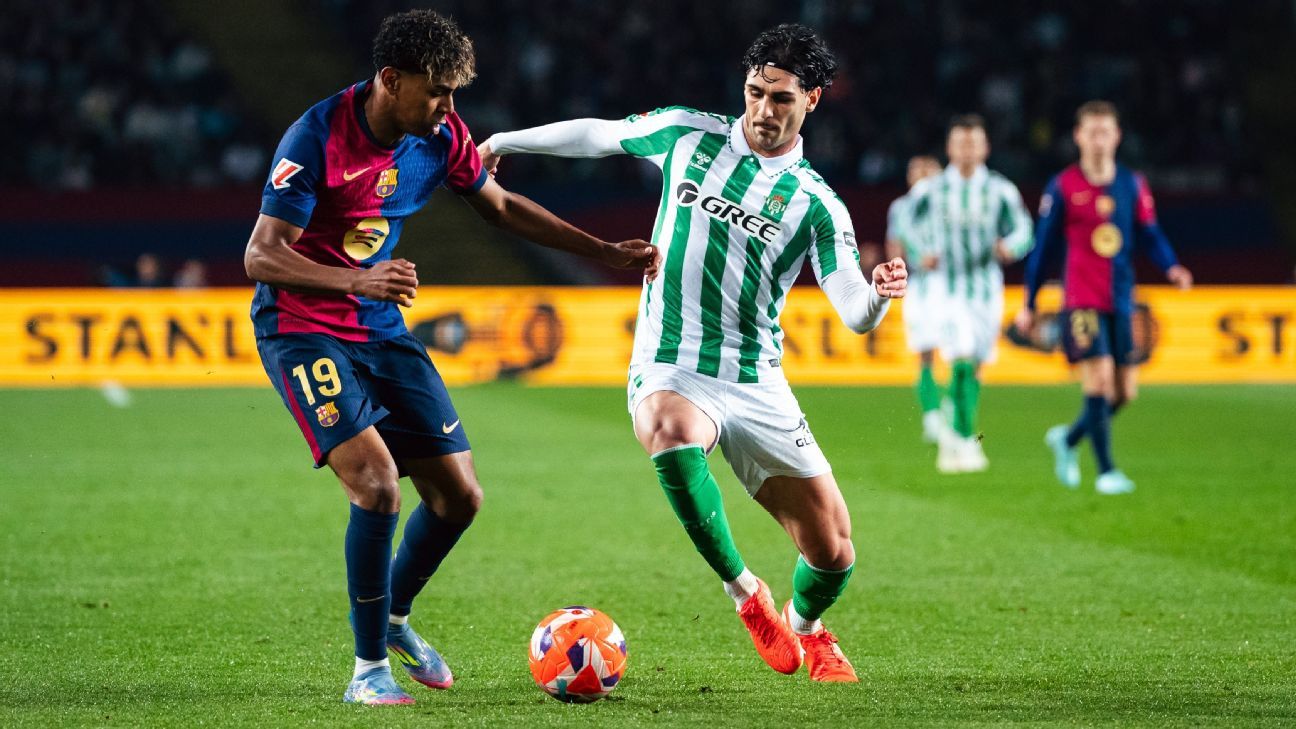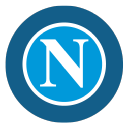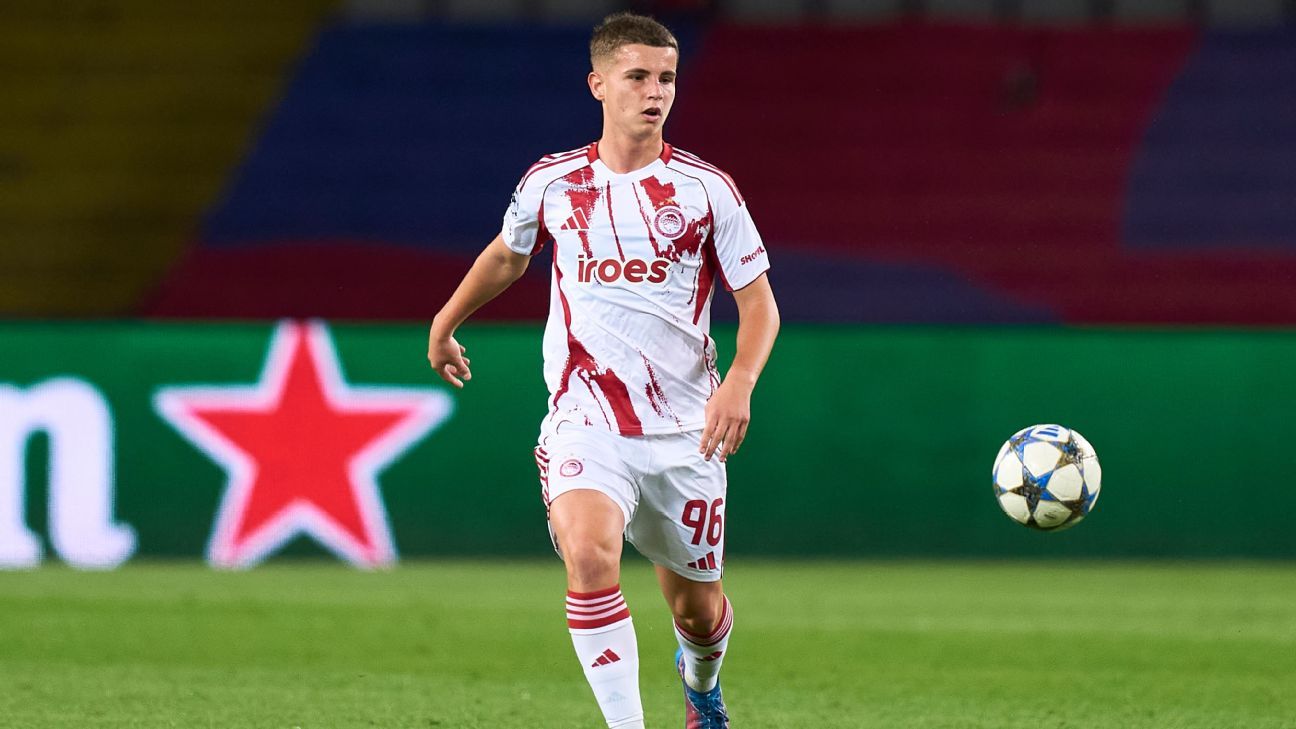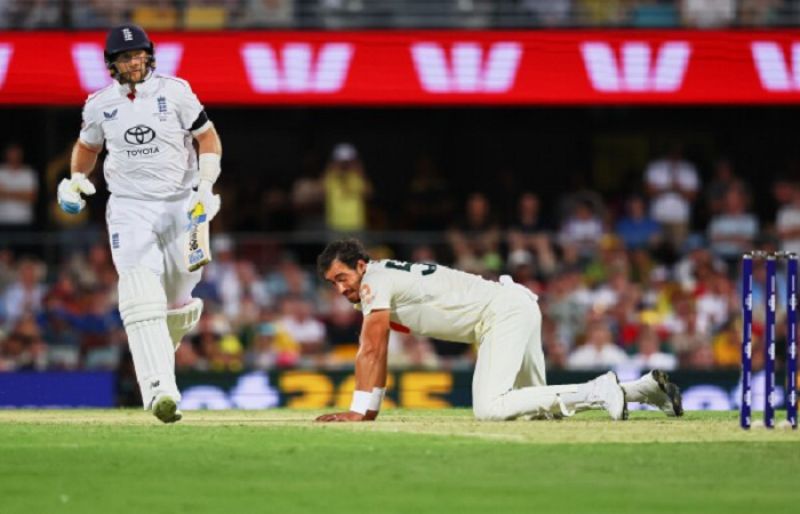Sports
Inside the Micah Parsons trade: How things fell apart in Dallas, and why Green Bay moved quickly

Additional reporting by Todd Archer, Rob Demovsky, Dan Graziano and Seth Wickersham
THE PIVOTAL MEETING that led to one of the most shocking NFL trades of the past decade occurred on a pleasant North Texas morning in mid-March, five months and a lifetime of ill feelings ahead of any deal being put to paper.
The agenda for the March 18 one-on-one in Dallas Cowboys owner Jerry Jones’ office at The Star, the team’s headquarters in Frisco, Texas, between Jones and two-time first-team All-Pro pass rusher Micah Parsons remains in question. A source close to Jones says it was Parsons who asked for the meeting, and that the 82-year-old owner always understood the subject to be Parsons’ contract. After declaring in February 2024 that he wanted to be a Cowboy “for life,” Parsons had been trying to reach an extension with the team, without success.
“Jerry and Micah had met periodically over the last four years to discuss business and leadership issues,” the source said, noting that the then-25-year-old Parsons viewed Jones as a mentor. “Jerry loved having these discussions with Micah. But the meeting in March wasn’t that, despite Micah saying publicly later it was to discuss leadership. Micah told Jerry, ‘I want to come in and discuss where we are,’ meaning a contract extension. So that was Jerry’s expectation.”
A source close to Parsons said this is “absolutely not” true and that Jones called Parsons in for a leadership meeting, only to steer the conversation toward contract talks. The source says Parsons directed Jones to talk details with his agent, David Mulugheta. However the conversation got to a contract extension, both parties acknowledge that it got there.
Over a three-hour meeting, Jones and Parsons discussed numbers, years and guaranteed money. Both sides expected to reset the market for edge rushers, topping the $40 million average per season and $123.5 million guaranteed that Myles Garrett of the Cleveland Browns had received nine days earlier. Parsons’ 52.5 sacks in his career are the fifth most in a player’s first four seasons. Jones said after Parsons left his office at The Star, the owner believed an agreement was done.
Later the same day, Parsons called Cowboys chief operating officer and co-owner Stephen Jones, Jerry’s son, in an attempt to get more money out of the deal, the source told ESPN.
“[Parsons] called Stephen and asked can we do this, can we change the numbers and up the guarantee,” the source said. “He started negotiating. He asked for several different elements and increases. This became a negotiation that Micah was in charge of.”
Stephen Jones consulted with his father, and Jerry agreed to the sweetened terms. The Cowboys believed they had a deal in place with Parsons and would continue to insist that he had agreed to it. Though the exact terms aren’t known, Cowboys sources insist they offered more guaranteed money than the $136 million Parsons would get from Green Bay, albeit spread across a five-year extension, not the four-year extension the Packers worked out.
“It was north of $150 million,” the source said.
The Cowboys had been known to conduct contract talks without players’ agents present — a practice known around the league as “hotboxing.” Dak Prescott‘s 2024 deal was one such negotiation, whereby the Joneses and the quarterback discussed Prescott’s place within the organization’s future and Prescott’s agent, Todd France, came in later to negotiate the finer details of a contract. (“I never engaged in numbers,” Prescott said.) The deal was eventually signed the day of Dallas’ first game of the season. If the Cowboys expected this negotiation to follow the same path, Mulugheta was about to confront them with a counterpoint.
Jones would say in August on Michael Irvin’s podcast, “We were going to send [the terms] over to the agent and the agent said don’t bother because we’ve got all that to negotiate.”
To this day, Parsons’ agency has never seen the final details or structure of the deal that Jones said he cut with Parsons in April, per a source close to Parsons. Jones and Mulugheta would never truly negotiate at any point. Dallas would simply say the deal is done; Parsons can have it if he wants it. (Mulugheta declined to comment for this story, but discussed the matter on ESPN’s “First Take” Tuesday.)
“I’m the one who has to sign the check and Micah is the one who has to agree to it,” Jones said on April 1 at the NFL owners spring meeting in Palm Beach, Florida. “That’s the straightest way to get there, is the one who writes the check and the one who is agreeing to it talking.”
The Jones source said he had nothing against Mulugheta, though Jones insisted to reporters in Palm Beach that he didn’t know Mulugheta’s name, adding, “The agent is not a factor here, or something to worry about.” At that point, Jones was dug in because “Micah looked him in his eyes and said we have a deal.” The source relayed a feeling from Jones of, “Oh so that’s how they are going to do it. Micah is going to negotiate with us, we’re going to go up, we’re going to have an agreement, and then the agent says that’s the floor and we’re going to go from there?”
“Jerry was like, ‘Hell no. That’s not the way this is going to work.'”
1:54
Schefter breaks down how Parsons to the Packers came to be
Adam Schefter breaks down the massive Micah Parsons trade from Dallas to Green Bay.
WITH THE PARSONS situation seemingly at an impasse, the Cowboys readied themselves for the 2025 NFL draft in late April. Parsons’ future with the team was not an issue stressed by draft pundits or armchair analysts, most of whom had Dallas selecting a wide receiver with the No. 12 pick. The Cowboys would fill a different need by taking guard Tyler Booker, then in early May getting their receiver by making a trade with the Pittsburgh Steelers to obtain mercurial wideout George Pickens.
The benefit of hindsight suggests Dallas’ second-round selection had greater meaning than believed at the time, though a Cowboys source said the Parsons matter did not affect their draft board. Edge rusher Donovan Ezeiruaku, chosen with the No. 44 pick, came off a season in which he led the FBS with 62 quarterback pressures and had 16.5 sacks. Those seeking subtext behind the Ezeiruaku pick mostly noted that edge rushers Dante Fowler Jr. (signed on a one-year deal in March — the Packers were believed by league sources to be runners-up for his services) and Sam Williams were heading into contract years, and that the rookie could help ensure the future. Less meaningful to observers was the fact that Parsons was headed into a contract year too.
Although Jones would later say the team began discussing the idea of a Parsons trade in the spring, Dallas did not explore trade talks involving Parsons before the draft, per a Cowboys team source. For one, the contract negotiations were still fresh and the team harbored hope of Parsons accepting the previously discussed deal. The Cowboys also prefer to do trades postdraft when they believe other teams are less inclined to cling to personnel. The Pickens deal reinforced that philosophy.
But the longer Parsons went without a contract, the less likely he and Mulugheta were to accept the terms Jones believed had been agreed upon in March — the edge rusher market had begun to skyrocket. In the weeks before the Jones/Parsons summit at the Cowboys practice facility, the Las Vegas Raiders‘ Maxx Crosby (three years, $106.5 million, $91.5 million guaranteed) and Browns’ Garrett ($40 million per year and $123.5 million guaranteed) had inked new deals. By mid-July, the Steelers’ T.J. Watt would sign a three-year, $123 million extension that established him as the league’s highest-paid nonquarterback on an average salary per year basis.
Sources close to Parsons believed that he, more than three years younger than Garrett and five years younger than Watt, would blow those deals away. And a Cowboys source said the team got indications that Parsons’ camp would prefer to “go last” in the pass-rush market, because prices were only rising.
As Jones watched the market spike around him, the Cowboys owner and GM grew increasingly comfortable letting Parsons play on his fifth-year option or trading him.
Balancing the cost of the entire roster was a factor in Dallas’ calculus. Only one team — the Cincinnati Bengals — has three players making at least $30 million per year. If the Cowboys had given Parsons more than $40 million annually, they would have had the league’s highest-paid defender, highest-paid quarterback in Prescott ($60 million per year) and one of the highest-paid wide receivers in CeeDee Lamb ($34 million).
If the Cowboys weren’t paying Parsons, it would make negotiating with in-house stars, most notably guard Tyler Smith and cornerback DaRon Bland, an easier proposition. Smith, a 2022 first-round pick, could get his extension after Year 3 in a way Parsons did not. Bland was signed to a four-year, $92 million extension on Sunday.
“It’s an allocation of money,” Jones said the night the trade was completed. “So, we chose to have numbers of players that we could pay handsomely that would be those caliber of players, not young practice squad players. We’re talking players that can really compete.”
And while Parsons’ presence in the lineup was impossible to replicate — by expected points added per play from 2021 through 2024, the Cowboys were the NFL’s best defense with Parsons on the field and the league’s worst by the same metric when he was not — Dallas also believed there were times when his skills were counterproductive to the winning cause. Parsons ranked 68th among edge rushers in stop rate against the run and 81st in yards per run stop last season, according to the FTN Football Almanac.
1:36
Orlovsky slams Parsons trade as ‘one of the worst’ in Cowboys’ history
Dan Orlovsky goes off on the Cowboys for allowing Micah Parsons to leave and receiving very little in draft picks from the trade.
“For Jerry, it came back to we have got to be able to stop the run,” the source close to Jones said. “Micah does not do that. In fact, because we couldn’t stop the run, it made Micah less effective. Then they’re going to run right at him, and that’s not what he does. We could not take care of mission critical.”
Still, the Cowboys were preparing as if Parsons would be in the lineup in 2025. They understood how difficult it would be to trade him, even though a team source said they were unconcerned about the public relations fallout the team would face given his popularity with fans. This was a business and personnel consideration only, and the Joneses’ belief that the price would have to be two first-round picks and an established defensive player was crystallized as the return about a week out from the trade, per a team source.
The last star pass rusher traded on his rookie contract — also right before the start of the season — was Khalil Mack in 2018. The Chicago Bears sent two-first-round picks to the then-Oakland Raiders to acquire him; Mack had 40.5 sacks through four seasons, 12.5 fewer than Parsons over the same time frame. Packers general manager Brian Gutekunst, in his first season in charge at the time, had a comparable offer to the Raiders turned down, an experience that might have helped get the deal for Parsons over the line.
“I think what I learned from [the Mack] experience is you’ve got to be in it early,” Gutekunst said Friday.
Only a week out from the start of the regular season, there simply wouldn’t be many trade suitors willing to pay that freight, especially when they would have to negotiate a market-shattering new contract with Parsons on top of the draft and personnel capital they would be expending.
Meanwhile, Parsons himself had remained around the team, showing up to a crawfish boil and paintball outing during the first two days of the offseason program in April as a stated show of leadership and support for new coach Brian Schottenheimer. In June, Parsons told reporters he would attend training camp, though a hold-in began to emerge as a likely proposition absent a new deal.
“When you go around the league and you see these other teams taking care of their best guys, I seen T.J. [Watt] gotten taken care of. Maxx [Crosby] got taken care of. Myles [Garrett] got taken care of, [and] he’s got two years left on his deal,” Parsons said on July 22, the day after training camp began. “You see a lot of people around the league taken care of, and you wish you had that same type of energy.”
There was tension, but the relationship between Parsons and the Cowboys was bubbling at a low simmer. Almost without warning, it would boil over.
0:42
Tannenbaum: Trading Micah Parsons was a ‘massive strategic mistake’
Mike Tannenbaum sounds off on Jerry Jones and the Cowboys’ decision to trade Micah Parsons to the Packers.
IN AN ERA when statements from famous athletes are painstakingly stage-managed by player agents and teams of publicists, this gave the appearance of something different.
At 1:16 p.m. CT on Friday, Aug. 1, Parsons transmitted three pages of single-spaced text from his iPhone’s Notes app to X, laying out chapter and verse of his discontent with the Cowboys. He revealed his perspective on the March meeting with Jones, the parameters of the contract agreement that he said he believed were a starting point and the Cowboys thought represented an agreement, and capped it all off with a trade demand.
“Unfortunately I no longer want to be here,” Parsons wrote. “I no longer want to be held to close door negotiations without my agent present. I no longer want shots taken at me for getting injured while laying it on the line for the organization our fans and my teammates. I no longer want narratives created and spread to the media about me. I had purposely stayed quiet in hopes of getting something done.”
The quiet had been interrupted, though it had been Jerry Jones who had broken the silence earlier in camp with an indictment of Parsons’ durability and availability.
“Just because we sign him doesn’t mean we’re going to have him,” Jones said. “He was hurt six games last year [actually four]. Seriously. I remember signing a player for the highest-paid at the position in the league and he got knocked out two-thirds of the year in Dak Prescott. So, there’s a lot of things you can think about, just as the player does, when you’re thinking about committing and guaranteeing money.”
Parsons missed only one game over his first three seasons in the league.
The “repeated shots” Parsons cited continued when Jones was asked to respond to the “Pay Micah” chants the owner was serenaded with by fans at camp.
“I heard it light, but not compared to how I heard them say, ‘Pay Lamb’ [last year],” Jones said a day later. “That was a faint little sound compared to the way they were hollering last year, ‘Pay Lamb.’ … Whoever’s not in, you can count on a few hollering that. But it was a big loud chant last year on Lamb.”
Stephen Jones would further aggravate Parsons by commenting, “We want to pay Micah too, he’s got to want to be paid.”
Amid the pettiness and hurt feelings, Parsons continued to show up — a source close to Parsons said Mulugheta doesn’t see the value in players getting fined and advised him to be present — albeit while citing back tightness as the reason he wasn’t practicing. Parsons had an MRI on his back in late August that came back clean, according to Schottenheimer, and was cleared by Cowboys doctors to practice.
1:37
Why Herbstreit applauds Dallas for trading Micah Parsons
Kirk Herbstreit thinks the Cowboys trading Micah Parsons will be good for developing a new team culture.
He continued to participate in walk-throughs and meetings but also exhibited strange behavior including not wearing his practice jersey, or on another day wearing it around his neck, and coming to practice without shoes. Before the team’s preseason finale against the Falcons, Parsons ate nachos as he walked to the locker room, and most memorably lay on a medical table during the game and appeared to close his eyes. The image went viral.
“[Cowboys pass-rushing legend] Charles Haley would have flipped him off the damn table if he saw that,” a team source said.
Parsons’ behavior during camp rubbed many in the building, including in the locker room, the wrong way, with one team source saying his energy was “deflating.” But a team source noted that Parsons stayed engaged in meetings and conducted his own two-a-days — one lift, one running session per workday. “I believed he was doing everything he could to be ready for Philly (Week 1),” the source said.
This encapsulates the Parsons experience to sources in the building over his four-year tenure. Multiple sources said he wasn’t the most diligent in the weight room or in getting treatment, though others considered him a hard worker who improved his communication skills with coaches and players but whose decision-making was sometimes in question. One example was Parsons’ outspokenness on his podcast, which rankled some teammates. The front office and coaches didn’t have a major problem with it. But teammate Malik Hooker made his issues known publicly last year. As one team source put it, Parsons was known to be critical, sometimes out of passion for the game, but coaches would urge him to consider that “you can’t call guys out who don’t have your ability,” and learning how to lead and “bring others along with you” is crucial. That part was considered a process for him.
Amid the turmoil, there were many in the game who believed a détente would eventually be reached. Multiple team sources believed Parsons was sincere in his stated desire to retire a Cowboy, noting that he recently built a home in the area. “I think he felt he was going to play out his career there,” a source said. Jerry Jones’ own words were another major reason why the matter seemed resolvable.
“Any talk of trading is B.S.,” Jones said on the “Stephen A. Smith Show” on Aug. 22 even as a team president who knows the Cowboys operation well told ESPN that in his discussions with them in August, it was clear that Dallas was prepared to move Parsons.
“Of course Jerry gave a head fake to the media,” a source close to Jones said. “You have to go out and say we are not interested in trading him. If you say you are trading him, you don’t get s—.” Jones would acknowledge to reporters after Parsons was traded that this had been a purposeful tactic.
Amid the drama around the contract and other lesser issues including Parsons’ practice habits among the pain points, the Joneses had seen enough. The Cowboys told the team president that they loved the player, but not the person. They had made up their minds. Now they just needed a trade partner.
1:29
EJ Manuel questions how Cowboys could trade Micah Parsons
Sam Acho and EJ Manuel react to the Cowboys trading Micah Parsons to the Packers.
TWO DAYS BEFORE Parsons became a Packer, the pass rusher’s representatives made one last-ditch effort with the Cowboys — in the form of an email. The note from Mulugheta to Jerry and Stephen Jones, as one source who viewed the correspondence recalls, acknowledged that a lot of things had been said in the media, perhaps some miscommunications along the way, but despite all of that, Parsons was still willing to do a deal that would keep him in Dallas. The letter said Parsons’ representatives were willing to come to Dallas, jump on a video call, whatever it took to potentially hammer something out.
Jerry Jones responded to the message, saying the Cowboys were prepping a trade and if Parsons wanted to play in Dallas in 2025, he would have to do so on his fifth-year option. Parsons would become a free agent in 2026, but the team could also use the franchise tag to prevent his departure at that point. Parsons would have to decide his next move if the Cowboys couldn’t trade him, though a source close to him notes that Parsons never threatened to hold out and if healthy, he would have played on the option.
Things accelerated from there. The Packers, given permission to speak to Mulugheta by the Cowboys, made their first formal contract offer to Parsons on Tuesday. Green Bay had parameters of a trade hammered out that matched Dallas’ terms: Two first-round picks and veteran defensive tackle Kenny Clark would go to the Cowboys in exchange for Parsons. Clark, a staple of the Packers defense since entering the league in 2016, was hardly a throw-in. His contract was attractive — Green Bay had already paid him the bulk of his 2025 deal, so the Cowboys would pay him just $2 million this season, and $20 million unguaranteed next season. A two-year, $22 million deal for a high-level player was viewed as a win for a Dallas team that sees the 29-year-old Clark as a multiyear solution, and there would also be no dead money if the Cowboys chose to release him after the season.
“From our perspective, it had to include Kenny Clark,” a source close to Jones said. “The only way it worked for us, we need something that helps us now and helps us in the future.”
That Green Bay — the opponent that had knocked three of the best Cowboys teams of the past 11 years (2014, 2016, 2023) out of the playoffs — was the trade partner was apparently not a deterrent to getting the deal done.
As for Parsons’ new contract, while the Cowboys had been unwilling to deal with Mulugheta, the agent’s communication with the Packers was smooth, according to a source close to Parsons. Past deals for clients Jordan Love and Xavier McKinney offered familiarity between the parties, so hammering out an agreement took some time but was not painful according to the source. Had the deal fallen apart, at least three other teams were interested, and the Cowboys would not have traded Parsons within the division. One team told ESPN it wasn’t interested because it felt the price was too high for a player who might turn out to be a headache. Another believed Dallas wouldn’t trade Parsons until next spring and indicated they might be interested then.
Green Bay knew the deal would be costly and didn’t fight that reality, with a source familiar with negotiations saying the contract was “transparent and fast,” for the most part. The move to a deal gained steam in the hour or so before 5 p.m. ET on Thursday, once Mulugheta had laid out the trade terms and Parsons had signed off. Parsons’ four-year, $188 million deal included $120 million fully guaranteed at signing and $136 million in total guarantees, making him the highest-paid nonquarterback in NFL history.
The Packers have reached the playoffs five times in seven seasons under Gutekunst but have not made a Super Bowl during that time. Less than a year after Gutekunst was promoted to GM in 2018, then-team president Mark Murphy fired Mike McCarthy as coach with four games left in that season. In 2019, Murphy hired Matt LaFleur, who took Green Bay to two straight NFC title games, but the team hasn’t been back since. Both Gutekunst and LaFleur are under contract through the 2026 season, and both report to new team president Ed Policy, who took over in July after Murphy retired.
Several Packers sources said Gutekunst thought all along a trade for Parsons was a long shot. He thought that when push came to shove, Jerry Jones would not part ways with a star player in the prime of his career — an idea Gutekunst confirmed Friday in Parsons’ unveiling in Green Bay.
“The chances of these things [blockbuster trades] happening are pretty slim, and I think that was my mindset the whole time, was keep the conversations going because of the uniqueness of the player,” Gutekunst said. “But I don’t think it was really until the last few days that I actually thought, ‘Hey, there’s an opportunity here to close this thing out.'”
When doing their homework on Parsons, Gutekunst and the Packers reached out to people that had worked with, played with or coached Parsons in college and in Dallas. He wouldn’t name names, but league sources said Gutekunst and McCarthy, who coached the Packers from 2006 to 2018 and Cowboys from 2020 to 2024, maintained a good relationship. Parsons and McCarthy had a solid connection — the edge rusher said in January that Dallas’ decision to part ways with his former coach was “devastating.” One Packers source said the possibility of landing Parsons started to feel real about a week before the deal, which lines up with Dallas’ timeline of when the Cowboys got serious. By late afternoon Thursday, LaFleur spoke directly with Parsons about their new partnership, with his assistant coaches coming in and out of LaFleur’s office to high-five and celebrate. As to which team got the better end of the deal, opinions varied, though the most forceful reaction came in the form of criticism leveled at the polarizing Jerry Jones. Two NFL executives questioned why the Cowboys didn’t get more in return after the trade went down. “Very bad for Dallas in that they received little compensation in comparison to other superstar prime trades,” a separate NFC executive said. “It’s OK for Green Bay in that their interests are to get beyond the first or second round. I think [Parsons is] a very productive regular-season player. I think when teams start running heavy in the playoffs, he becomes less scary.” In a news conference following the trade, one in which Jerry Jones repeatedly referred to Parsons as “Michael,” the owner justified the move. “It takes more than one [player to win a championship] and so you do have to allocate your resources, whether it be draft picks or whether it be finances, you have to allocate those resources,” Jones said. “There was no question in our mind that [Micah] could bring us a lot of resources on a trade.” As Jones took heat for the deal in some corners, others in the league were more conciliatory toward Dallas, especially when noting the increased salary cap flexibility and how it could impact the Cowboys’ negotiations with other core players. “[Filling a] DT need and two 1s is a good haul, honestly,” an AFC executive said. “Plus, not paying another max contract. That’s a big part of this.” The Joneses expressed a belief that they would end up with another three to five players out of the deal, in addition to taking care of Smith and Bland. The end of the Parsons era in Dallas, perhaps fittingly, came in the form of another tweet — this one a farewell. While expressing his appreciation to Cowboys fans and vowing that North Texas would continue to be his offseason home, Parsons acknowledged the fractious negotiations that had reached a tipping point with that much-debated meeting with Jerry Jones. “I never wanted this chapter to end, but not everything was in my control. My heart has always been here, and it still is. Through it all, I never made any demands,” Parsons said, not acknowledging his trade request. “I never asked for anything more than fairness. I only asked that the person I trust to negotiate my contract be part of the process.” Parsons made his first appearance in Green Bay the next day, meeting the local media and expressing relief at his situation’s resolution. He dismissed his back problem — revealed on Monday to be an L4/L5 facet joint sprain for which the Cowboys had prescribed a five-day plan of an anti-inflammatory corticosteroid and a physical therapy program — as something that would be a major issue, reinforcing the belief that his contract, not health, was at the core of his limited summer participation. Parsons practiced with the Packers on Monday. “I think physically, you know, I’m great,” Parsons said. “I think I can contribute a lot. I’m going to team up with the doctors in creating a plan. We already talked about how we can ramp things up and get me into a flow where they feel comfortable and I feel comfortable.” Parsons will return to Dallas with his new team on Sept. 28, for a Sunday night, Week 4 showdown against the Cowboys. His final appearance at AT&T Stadium as a Cowboy will be remembered for the sight of Parsons splayed across a training table. His next one, wearing a Packers uniform, figures to restore the vision of how Parsons became one of the elite defensive players of his generation in the first place. Parsons himself noted the stakes of what comes next. “They didn’t give up what they gave up for me to sit on the sidelines.”
Sports
Laurens’ weekend preview: Can Real Betis halt Barcelona run?

Every Friday I will pick the best or most exciting upcoming games that are not to be missed in the world of football. From derbies to top-of-the-table clashes, relegation six-pointers to world-class players facing each other or other interesting tactical battles, there will be something for everyone to enjoy.
This week, we take you to Portugal, Italy, Spain, France, Scotland and the U.S. across men’s and women’s football, with a final, a top-of-the-table clash, a derby and more!
– Lindop: A week to save his job? Is Liverpool boss Slot under pressure?
– Dawson: Man United must improve if they want Champions League place
– Karlsen: One thing to know about the 42 confirmed 2026 World Cup teams
French Première Ligue, Matchday 9
Kick off: Friday, 1 p.m. ET / 6 p.m. GMT
These two clubs have one of the biggest rivalries in France, and for the Paris Saint-Germain men’s team this is the biggest domestic game of the season. For the women, they are not there yet due to Marseille still being in a development phase, but the game will still be huge.
PSG are in transition under manager Paulo Cesar and have moved away from big signings to focus on youth development and their academy, building around experienced captain, left back/midfielder Sakina Karchaoui. They have struggled massively in the UEFA Women’s Champions League with four defeats from four games, but have won their last five league matches and are only three points behind leaders OL Lyonnes, who inflicted their only loss of the domestic season so far — 6-1 back in September.
For Marseille, this is probably the biggest game so far in the history of their women’s team. They were in the French second division last season and are trying to grow, guided by manager, and France legend, Corinne Diacre. They are currently ninth in the table, four points above the relegation zone, and have just one win in their last four matches, but the emotion and scale of the occasion could bring out the best in them. Of course, they will rely on their best player and top goal scorer Mathilde Bourdieu (four goals in eight games so far) to write a new great chapter in the history books. But it’s unlikely they will win.
Prediction: Marseille 1-3 PSG. The Parisiens will be too strong, even in a hostile environment like Marseille. This game arrives a little too early for l’OM against a side who are in good form domestically.

 Mourinho’s first Lisbon derby for 25 years
Mourinho’s first Lisbon derby for 25 years
Benfica vs. Sporting CP
Liga Portugal, Matchday 13
Kick off: Friday, 3.15 p.m. ET / 8.15 p.m. GMT
It’s one of the biggest derbies in European football, and José Mourinho’s first Lisbon derby since he returned to Benfica.
Mourinho loves to have bragging rights in his city. But both teams are behind his former side FC Porto in the table — Sporting are three points adrift; Benfica, six — which means neither can afford to lose on Friday as Porto will likely beat lowly Vitoria de Guimaraes at home.
This will also be an encounter between two top strikers: Benfica’s Vangelis Pavlidis, who has 10 goals and three assists in 12 league games so far, and Sporting’s Luis Suárez (not that one) who has nine goals and two assists. Meanwhile, the battle in midfield between Benfica’s Richard Ríos (who is back from suspension for this derby) and Sporting captain Kasper Hjulmand will be fascinating given their differing styles of play.
The game will also be a great tactical encounter between two different managers. Mourinho is a legend, full of experience and mind games; Rui Borges is only 44 years old (18 years younger than Mourinho), but has shown some good qualities since he took over in December 2024.
Prediction: Benfica 2-2 Sporting CP. This will be fun! Both teams [yes, even a Mourinho team] will attack and score. Sporting have energy to burn, but Benfica have the home advantage.
Spanish LaLiga, Matchday 15
Kick off: Saturday, 12.30 p.m. ET / 5.30 p.m. GMT
Stream LIVE on ESPN+ (U.S.)
Four days after facing Atlético Madrid in a huge game, there is another potential tricky one for Barcelona away against Real Betis on Saturday. The LaLiga champions go into it one point clear of Real Madrid at the top of the table after they beat Diego Simeone’s Atlético side 3-1 in midweek, a result that has given them tons of confidence.
Despite losing 3-0 to Chelsea in the UEFA Champions League last week, Barcelona’s league form has been great and they’ve managed five wins in a row since their 2-1 Clasico loss to Madrid at the Bernabéu. Raphinha and Pedri are both back from injury and will bring more magic to support star winger Lamine Yamal who looks pain free and is playing well.
There are some big worries defensively, with Hansi Flick’s high line, and they might struggle against such a fluid Betis attack, but their attack is so flamboyant that they will fancy themselves to outscore the opposition.
What a game this is for Betis though. Manager Manuel Pellegrini and his players are having a great season. They are fifth in the table; Manchester United loanee Antony, whose form was one of the best stories of last season, is even better than he was then; Cucho Hernández has had a big impact since arriving in the summer; and things will get even better once midfielder Isco is back from injury soon.
Betis, who won the derby over Sevilla 2-0 last weekend, have drawn too many games this season (six, as many as their wins, with two defeats), which explains why they are 13 points behind Barcelona (with a game in hand). But this will count for nothing on Saturday.
Prediction: Real Betis 2-2 Barcelona. Betis have the pace and talent up front to cause the leaders all sorts of problems and it should be very exciting. Can defender Valentín Gómez cope with Yamal though?
0:47
Lionel Messi reacts to praise from a young Pep Guardiola
Lionel Messi watches an old video of a young Pep Guardiola praising his ability for the first time.
MLS Cup
Kick off: Saturday 2.30 p.m. ET / 7.30 p.m. GMT
You might not remember much from the 2014 World Cup final, depending on your age. But Lionel Messi and Thomas Müller faced each other for Argentina and Germany over a decade ago in Brazil, as Müller came out on top. The MLS Cup final is obviously not the World Cup final, but it is the first time the two legends of the game will compete directly again for another trophy. And it should be a great final, full of goals.
Miami has the home advantage of sorts, as the final will be played at the Chase Stadium, and is of course led by the unstoppable Messi. MLS is definitely too easy for him, even at 38, and the side has been on fire in the playoffs with four huge wins: 3-1 and 4-0 vs. Nashville; 4-0 vs. Cincinnati away; 5-1 vs. NYCFC!
Vancouver qualified on penalties against LAFC in the Conference final after an absolute crazy game, and 36-year-old Müller has been amazing since he arrived at the club, with eight goals and three assists in 10 starts in just 868 minutes played! Vancouver finished second in the West behind San Diego and fifth in the Supporters Shield, just two points behind Miami in third. However, Vancouver has beaten Miami twice already this season — including in the Concacaf Champions Cup, and a 3-1 win at Chase Stadium.
Prediction: Inter Miami 3-2 Vancouver. Messi will add another trophy to his long list as his Inter Miami side is flying right now. Watch out for in-form winger Tadeo Allende, as the Vancouver defense won’t be able to stop him.

 Celtic out to break Hearts
Celtic out to break Hearts
Celtic vs. Hearts
Scottish Premiership, Matchday 15
Kick off: Sunday, 10 a.m. ET / 3 p.m. GMT
Let’s be honest: after years of domination from Celtic and Rangers, none of us saw this coming in the Scottish Premiership. After 15 league games, Hearts are top of the table in Scotland, just ahead of second-placed Celtic on goal difference. Nine points clear of the chasing pack, these two have been the best teams in the league by far — something we expect from Celtic, but clearly not from the Edinburgh side, who finished seventh last season before topping their relegation group in postseason.
It’s all credit to Hearts manager Derek McInnes, who has done an amazing job after arriving mid-season last year, and Portuguese summer signing Cláudio Braga has been incredible (six goals and one assist already). But their form has been patchy in recent weeks as they have had two draws from their last three games.
Meanwhile, Celtic went on a great run under interim boss Martin O’Neill and now Wilfried Nancy has taken over permanently they will be keen to keep up the momentum. It is a big job for the former Columbus Crew head coach, who found so much success in Major League Soccer and won an MLS Cup in 2023 and Leagues Cup in 2024, but he has all the tools to succeed. His intense and vertical brand of football should excite the Celtic fans.
Prediction: Celtic 2-1 Hearts. Hearts have been a great story so far, but think Nancy will have an immediate impact and, after this win, Celtic will take the momentum into the rest of their season.

 Napoli’s chance to hurt Juve
Napoli’s chance to hurt Juve
Napoli vs. Juventus
Serie A, Matchday 14
Kick off: Sunday, 2.45 p.m. ET / 7.45 p.m. GMT
It’s all about the managers. Antonio Conte lifted three Scudetti with Juve (2012, 2013, 2014) and now manages Napoli, where he won the title last season. Meanwhile, Luciano Spalletti made the Napoli champions of Italy again in 2022-23 (some 33 years after Diego Maradona had guided them to their previous title on the pitch), and is now in charge of Juve. How times have changed for both.
It’s also the second huge Serie A game in a row for Napoli after their 1-0 win at Roma last weekend; a game in which they showed their solidity defensively and where Conte showed again what a great tactician he can be. Not only did he match Roma’s system and man-to-man marking, but playing star midfielder Scott McTominay in a deeper role and Brazilian winger David Neres (who scored the winning goal) in an “inside No. 10” position had a huge impact on the outcome.
It will be a different kind of challenge on Sunday. Napoli are very much in the title race and are only behind leaders AC Milan on goal difference, but Juventus are seventh and five points behind their hosts. Spalletti took over from Igor Tudor five weeks ago and is slowly putting his stamp on the team, following a disappointing run of results under the former manager. His 3-4-2-1 formation is not surprising given its success when he was at Napoli and though playing defensive midfielder Teun Koopmeiners at center back is a bit more unusual, the Netherlands international has been great.
Juve striker Dusan Vlahovic, clearly the No. 1 choice at center forward, got injured last weekend and will miss three months of action. This means the club will have to rely even more on their Turkish prodigy Kenan Yildiz, still only 20, but already one of the best players in Italy.
Prediction: Napoli 2-1 Juventus. It could be close, but I think there will be a few goals. Napoli are still unbeaten in Serie A so far this season, and that won’t change on Sunday.
Sports
Transfer rumors, news: Real Madrid, Man United eye Mouzakitis

Olympiacos teenager Christos Mouzakitis has Real Madrid and Manchester United among his admirers, while Tottenham Hotspur could move for Brighton & Hove Albion defender Jan Paul van Hecke. Join us for the latest transfer news and rumors from around the globe.
Transfers home page | Men’s grades | Women’s grades
TOP STORIES
– Sources: Chelsea-bound Emegha suspended by Strasbourg
– Goalkeeper Lloris signs contract extension to extend LAFC stay
– Arsenal sign Quintero twins, 16, from Ecuador
TRENDING RUMORS
– Real Madrid could rival Manchester United to sign Olympiacos wonderkid Christos Mouzakitis, The Sun reports. The 18-year-old midfielder recently impressed in the UEFA Champions League against Real Madrid, leading Los Blancos manager Xavi Alonso to sing his praises after the game. As such, the likes of AC Milan, Juventus and Atletico Madrid are also tracking his development. The Greece international could be available for transfer at around €45 million as things stand, although that may increase by January.
– Tottenham Hotspur could launch a £40 million bid for Brighton & Hove Albion defender Jan Paul van Hecke in 2026, according to TEAMtalk. Spurs have been long-term admirers of the Netherlands center back and even considered formally bidding to sign him last summer, before turning their attention elsewhere. Van Hecke has continued to impress for Brighton this term, playing 14 times for the club in the Premier League to date, and with his current deal expiring in June 2027 a transfer next year remains a distinct possibility.
– Arsenal are keeping an eye on Elche midfielder Rodrigo Mendoza, according to Sky Sports News. The Spain U21 international is one of several talented youngsters being tracked by the Gunners, following a strong start to the LaLiga season. Primarily used as a central midfielder, Mendoza has played 10 times in the league this term, scoring once.
– Crystal Palace striker Jean-Philippe Mateta has opened the door to a potential departure from Crystal Palace in January amid continued interest from Manchester United, says TEAMtalk. Mateta is reported to have communicated his desire to test himself at a higher level, prompting his team to explore possible options this winter. The France international has been in good form for Palace this season, scoring seven Premier League goals already, and bids in excess of £40 million could be enough to prize him away from Selhurst Park.
– AC Milan have agreed a deal to sign 20-year-old full back Juan Arizala from Deportivo Independiente Medellin, Fabrizio Romano has revealed. A €3 million fee, plus a future transfer clause, are reported to be part of the deal after the youngster turned down proposals from England and Belgium. Arizala has been capped 22 times by Colombia U20s, making his debut for the side at the beginning of 2025, and was part of the side that finished third at the U20 World Cup.
EXPERT TAKE
1:45
Has Bruno Fernandes been forced to play deeper by new signings?
The ESPN FC team discuss whether they think Bruno Fernandes should be playing higher up for Manchester United, and if new signings have caused him to drop back.
OTHER RUMORS
– The Saudi Pro League is ready to fund a huge bid to sign Liverpool winger Mohamed Salah if he is open to leaving. (Telegraph)
– Brighton & Hove Albion are monitoring Aston Villa midfielder Lamare Bogarde, as they target a long-term replacement for Carlos Baleba (Telegraph)
– A host of European clubs are tracking West Ham United teenage sensation Emeka Adiele. The 18-year-old left back is entering the final six months of his contract. (Football Insider)
– Chelsea are working on a deal to sign Under-17 World Cup star Mohamed Zongo from Burkina Faso side Tenakourou Academy. (Daily Mail)
– Santos are pushing to try and extend the contract of Neymar, as it expires at the end of the year. (Nicolo Schira)
– Newcastle United are ready to trigger Palmeiras midfielder Allan Elias‘ €100 million release clause. (Ekrem Konur)
– Chivas are finalizing a deal to sign Brian Gutiérrez from the Chicago Fire, in a deal worth a reported €5 million. (Tom Bogert)
– Nantes have entered the race to sign Deiver Machado from Lens, with talks having progressed over a January move in the last few hours. (Rudy Galetti)
Sports
England Bowled Out for 334 in Day One of Second Ashes Test – SUCH TV

England were dismissed for 334 in their first innings of the day-night second Ashes Test against Australia in Brisbane on Friday, with Joe Root remaining unbeaten on 138.
The visitors resumed day two on 325-9, with Root guiding England from a precarious 5-2 early on.
This marked his first century on Australian soil and 40th overall in Test cricket.
Root and Jofra Archer added nine more runs for the final wicket before Archer fell for a career-best 38, caught brilliantly by Marnus Labuschagne off Brendan Doggett.
Their 70-run 10th-wicket partnership set a new record for England at the Gabba.
Earlier, opener Zak Crawley scored 76 and Harry Brook added 31 to England’s total.
For Australia, veteran Mitchell Starc was the standout bowler, taking 6-75, and in the process, surpassed Wasim Akram to become the most successful left-arm fast bowler in Test cricket history.
Australia won the first Test in Perth by eight wickets inside two days.
-

 Tech5 days ago
Tech5 days agoGet Your Steps In From Your Home Office With This Walking Pad—On Sale This Week
-

 Sports4 days ago
Sports4 days agoIndia Triumphs Over South Africa in First ODI Thanks to Kohli’s Heroics – SUCH TV
-

 Entertainment4 days ago
Entertainment4 days agoSadie Sink talks about the future of Max in ‘Stranger Things’
-

 Fashion4 days ago
Fashion4 days agoResults are in: US Black Friday store visits down, e-visits up, apparel shines
-

 Tech4 days ago
Tech4 days agoPrague’s City Center Sparkles, Buzzes, and Burns at the Signal Festival
-

 Politics4 days ago
Politics4 days agoElon Musk reveals partner’s half-Indian roots, son’s middle name ‘Sekhar’
-

 Sports4 days ago
Sports4 days agoBroncos secure thrilling OT victory over Commanders behind clutch performances
-

 Business4 days ago
Business4 days agoKey Financial Deadlines That Have Been Extended For December 2025; Know The Last Date







